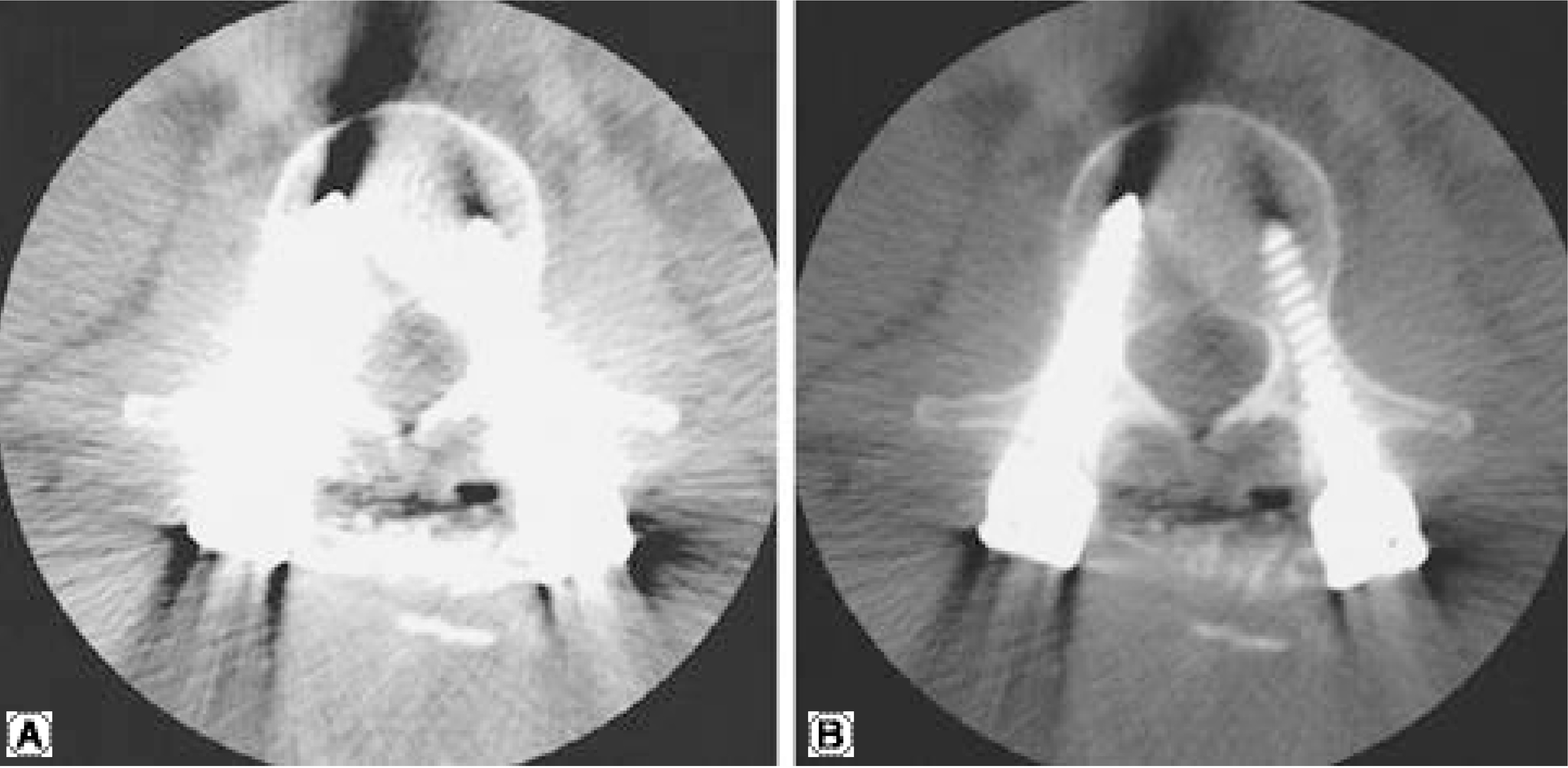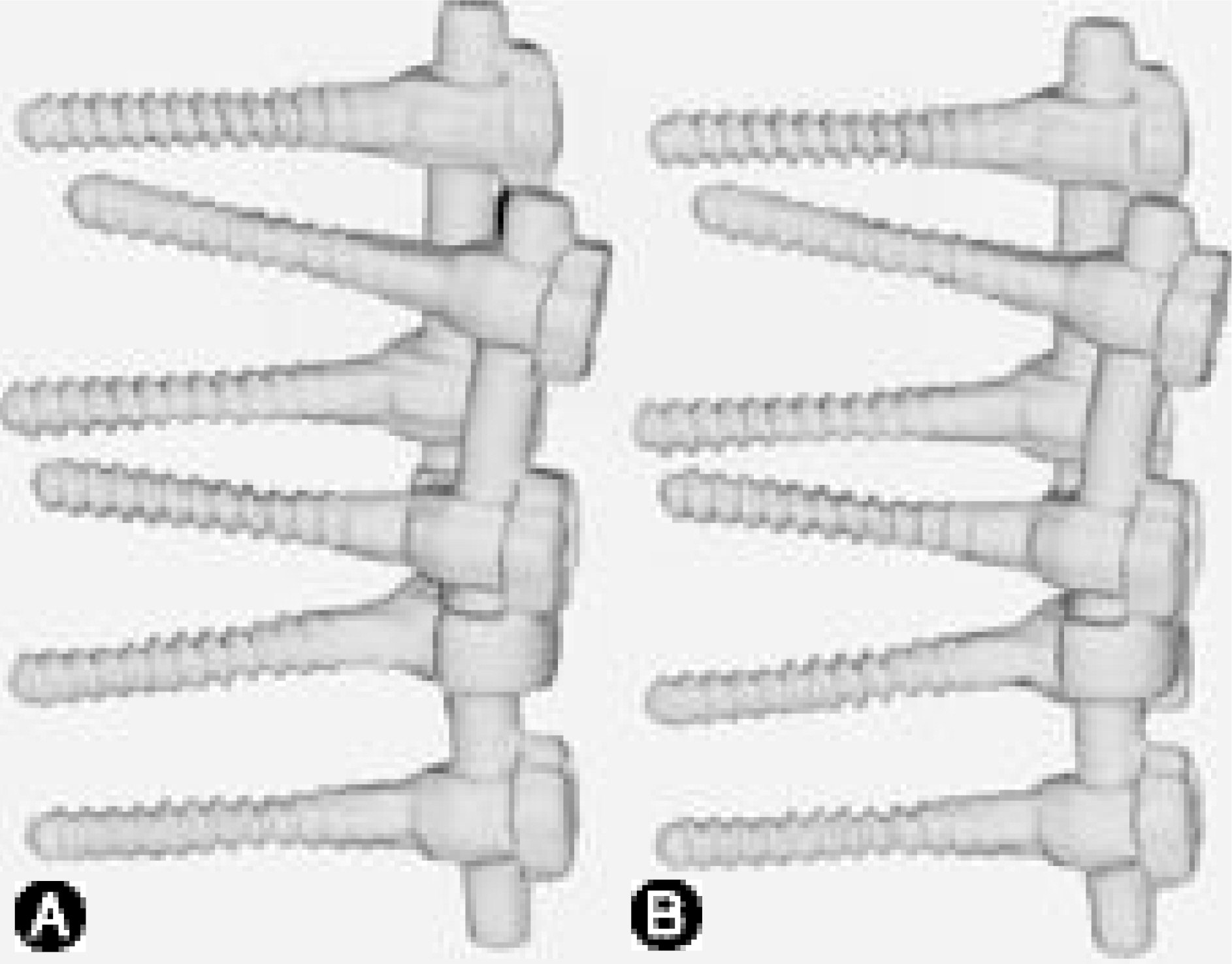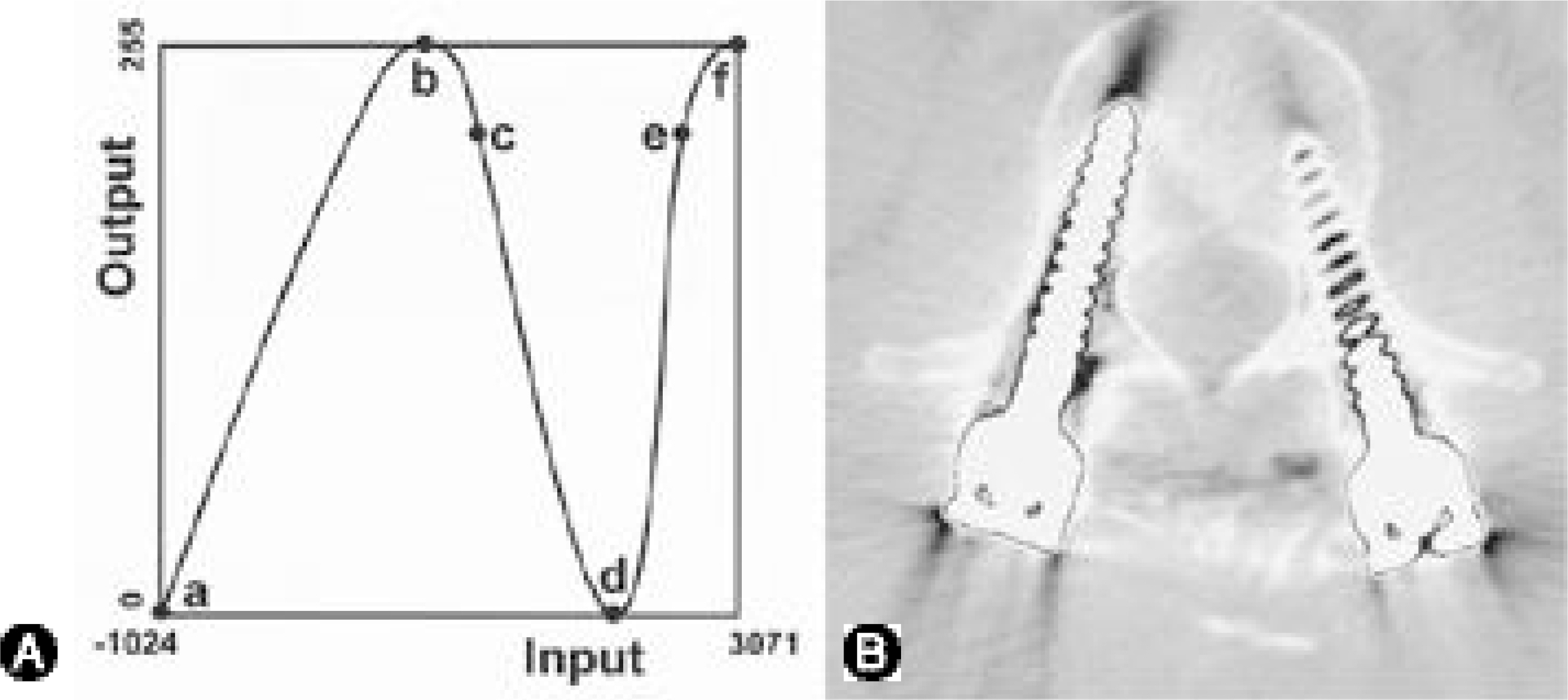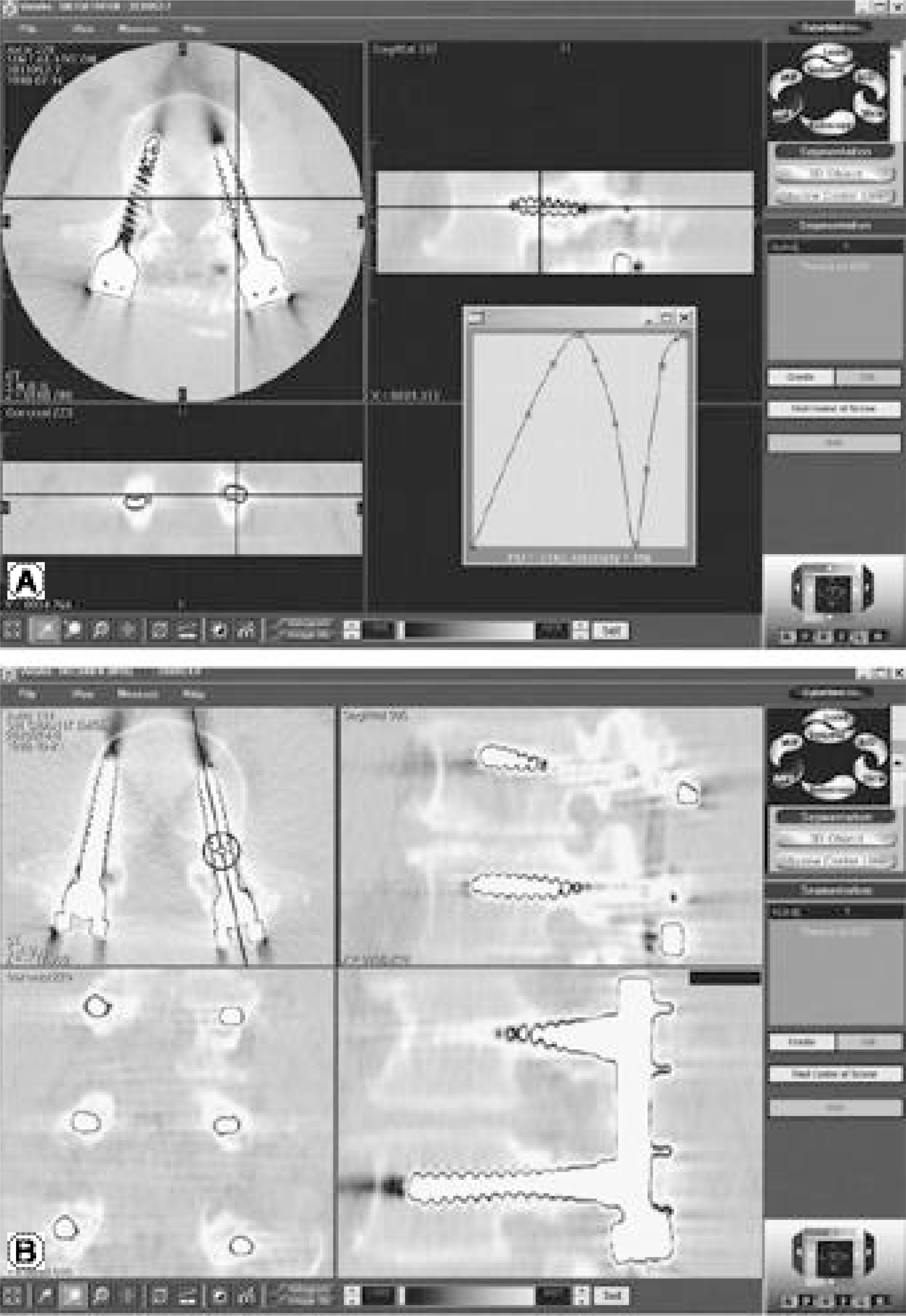J Korean Soc Spine Surg.
2002 Dec;9(4):280-288. 10.4184/jkss.2002.9.4.280.
Reduction of Metal Artifact around Titanium Alloy-based Pedicle Screws on CT Scan Images: An Approach using a Digital Image Enhancement Technique
- Affiliations
-
- 1Department of Orthopaedic Surgery, Eulji University, Daejeon, Korea.
- 2Department of Orthopedic Surgery, Seoul National University, Seoul, Korea.
- 3Department of Industrial Engineering, College of Engineering, Seoul National University, Seoul, Korea.
- 4Cybermed Inc., Seoul, Korea. kimnamkug@hotmail.com
- KMID: 2209709
- DOI: http://doi.org/10.4184/jkss.2002.9.4.280
Abstract
-
STUDY DESIGN: A study on the development of an algorithm to enhance computed tomographic images.
OBJECTIVE
The purpose of this study was to develop an approach to reduce the metal artifact that appears around pedicle screws, and thus to facilitate the evaluation of pedicle screw positions on CT scan images. SUMMARY OF LITERATURE REVIEW: Metal artifact caused by pedicle screws significantly reduces the interpretability of computed tomography images.
MATERIALS AND METHODS
We describe the development of an algorithm that processes CT scan images on a personal computer using a digital image enhancement technique. The algorithm improves CT images by transforming image pixel values using a proper transformation curve that takes into account the characteristic distribution pattern of metal artifact caused by pedicle screws made of titanium alloys. We implemented this algorithm in a program that reconstructs the resulting images in arbitrary planes and in axial, coronal, and sagittal planes. The software was tested with spiral CT scan images of 38 patients containing 190 pedicle screws.
RESULTS
In all test cases, our algorithm generated images with less metal artifact, better soft tissue visualization and clearer screw outlines than conventional bone setting. In addition, images reconstructed in arbitrary planes increase the convenience and confidence of localizing screw positions.
CONCLUSIONS
The algorithm effectively decreases metal artifact and improved pedicle screw localization.
MeSH Terms
Figure
Reference
-
1). Crane R. A simplified approach to image processing: classical and modern techniques in C. New Jersey, Pren -tice Hall PTR: 110-143. 1997.2). Kalender WA, Hebel R and Ebersberger J. Reduction of CT artifacts caused by metallic implants. Radiol. 164:576–577. 1987.
Article3). Pratt WK. Digital Image Processing. 2nd ed.New York: Wiley-Interscience;p. 263–322. 1991.4). Robertson DD, Weiss PJ, Fishman EK, Magid D and Walker PS. Evaluation of CT techniques for reducing artifacts in the presence of metallic orthopedic implants. J Comput Assist Tomogr. 12:236–241. 1988.
Article5). Robertson DD, Yuan J, Wang G and Vannier MW. Total hip prosthesis metal artifact suppression using iterative deblurring reconstruction. J Comput Assist Tomogr. 21:293–298. 1997.6). Wang G, Frei T and Vannier MW. Fast iterative algorithm for metal artifact reduction in X-ray CT. Acad Radiol. 7:607–614. 2000.
Article7). Yeom JS, Choy WS, Kim WJ, Kim HY, Kang JW, Kim YH, Kim NK and Lee JB. A patient-specific surgical simulation system for spinal screw insertion composed of virtual roentgenogram, virual C-arm, and rapid prototyping. J of Korean Orthop Assoc. 36:161–166. 2001.8). Yoo JU, Ghanayem A, Petersilge C and Lewin J. Accuracy of using computed tomography to identify pedicle screw placement in cadaveric human lumbar spine. Spine. 22:2668–2671. 1997.
Article9). Zhao S, Robertson DD, Wang G, Whiting B and Bae KT. X-ray CT metal artifact reduction using wavelets: an application for imaging total hip prostheses. IEEE Trans Med Imaging. 19:1238–1247. 2000.
Article
- Full Text Links
- Actions
-
Cited
- CITED
-
- Close
- Share
- Similar articles
-
- Experimental Observation of Pedicle Screws in Postoperative CT scan - Stainless steel vs. Titanium
- Computer-assisted Evaluation of Pedicle Screw Position on CT Images
- U-net based metal segmentation on projection domain for metal artifact reduction in dental CT
- Value and Clinical Application of Orthopedic Metal Artifact Reduction Algorithm in CT Scans after Orthopedic Metal Implantation
- Metal artifact production and reduction in CBCT with different numbers of basis images







